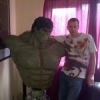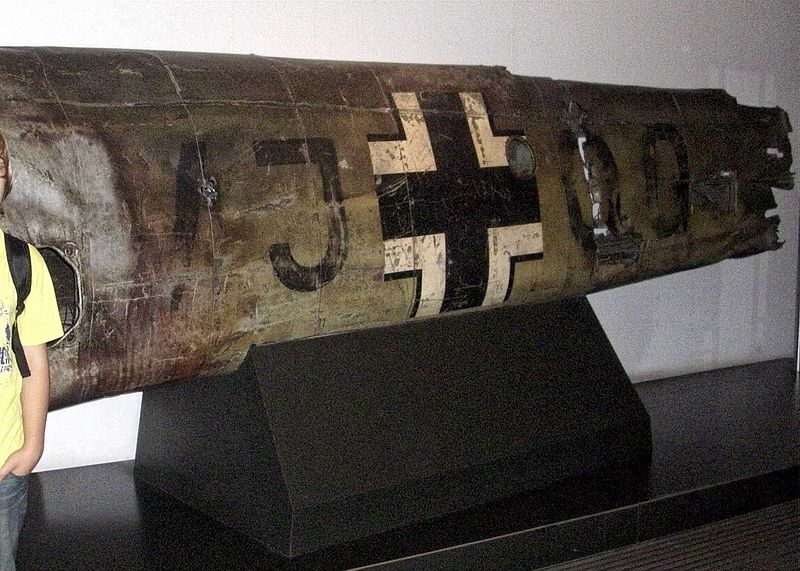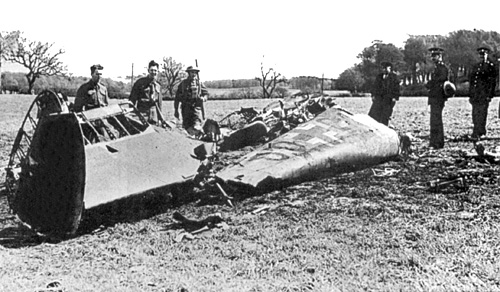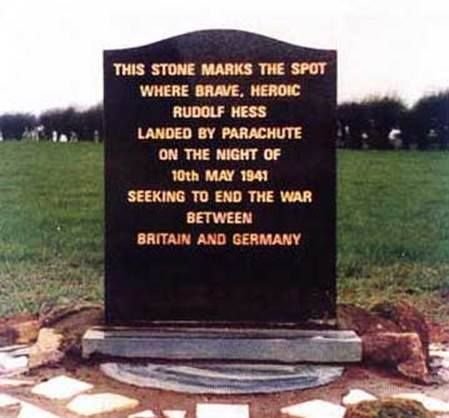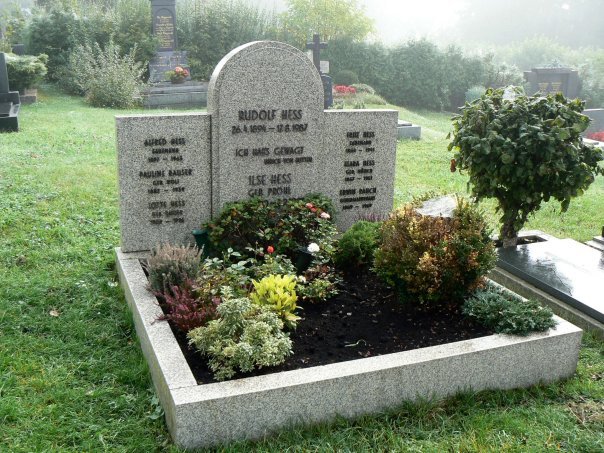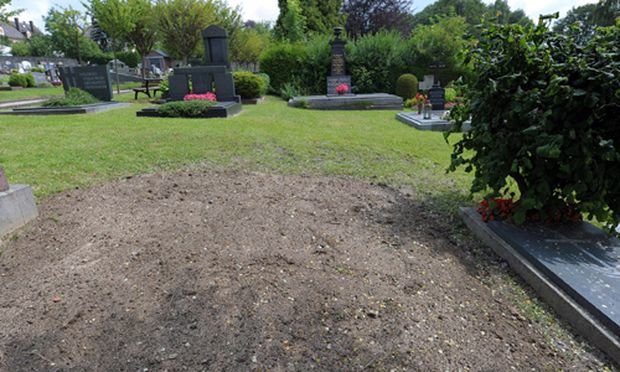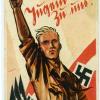Leaderboard
Popular Content
Showing content with the highest reputation on 09/02/19 in all areas
-
It is a very strange story indeed, I also heard that Mikhail Gorbachev wanted to release Hess and that the British would not allow it, perhaps another reason for his death. There is also the other theory that the prisoner in Spandau was not even Rudolf Hess but a double, hence his strange behavior at his trial. Dr. Hugh Thomas who had been a physician at Spandau and had personally examined Hess closely said he first became suspicious when he examined Hess and could find no sign of the scarring that Hess’s World War I wounds would have left on his torso. According to Thomas, Hess’s medical records said that he had been shot through the left lung, the bullet entering just above the left armpit and exiting between the spine and left shoulder. Such a wound would have left a visible mark, but Thomas found none.1 point
-
1 point
-
Many people maintain that Hess was murdered. Does that make sense after over 40 years imprisonment? On the other hand, Hess was 93 years old and according to reports of his physical condition, and would have been too weak and too frail to have strangled himself with an electric cable. A nurse on duty at the time also claimed to have seen two men at the scene, who were acting suspiciously and one of whom, was reported to have uttered (but not in German) "Das Schwein ist tot...." There were also at least two post-mortems carried out, one by the military occupation authorities, who reportedly removed several vital organs, and one post-mortem by German authorities, who also recorded that these organs were missing. Wikipedia statement: Other than his stays in hospital, Hess spent the rest of his life in Spandau Prison. His fellow inmates Konstantin von Neurath, Walther Funk and Erich Raeder were released because of poor health in the 1950s; Karl Dönitz, Baldur von Schirach, and Albert Speer served their time and were released; Dönitz in 1956, Schirach and Speer in 1966. The 600-cell prison continued to be maintained for its lone prisoner from Speer and Schirach's release until Hess's death in 1987, at an estimated cost of DM 800,000. Conditions were far more pleasant in the 1980s than in the early years; Hess was allowed to move more freely around the cell block, setting his own routine and choosing his own activities, which included television, films, reading and gardening. A lift was installed so he could more readily access the garden, and he was provided with a medical orderly from 1982 onward. Numerous appeals for Hess's release were launched by his lawyer, Dr Alfred Seidl, beginning as early as 1947. These were denied, mainly because the Soviets repeatedly vetoed the proposal. Spandau was located in West Berlin, and its existence gave the Soviets a foothold in that sector of the city. Additionally, Soviet officials believed Hess must have known in 1941 that an attack on their country was imminent. In 1967, Wolf Rüdiger Hess began a campaign to win his father's release, garnering support from notable politicians such as Geoffrey Lawrence, 1st Baron Oakseyin Britain and Willy Brandt in Germany, but to no avail, in spite of the prisoner's advanced age and deteriorating health Hess died on 17 August 1987 at age 93 in a summer house that had been set up in the prison garden as a reading room. He took an extension cord from one of the lamps, strung it over a window latch, and hanged himself. Death occurred by asphyxiation. A short note to his family was found in his pocket, thanking them for all that they had done. The Four Powers released a statement on 17 September ruling the death a suicide. He was initially buried at a secret location to avoid media attention or demonstrations by Nazi sympathisers, but was re-interred in a family plot at Wunsiedel on 17 March 1988; his wife was buried beside him in 1995. Hess' lawyer Dr. Alfred Seidl felt that he was too old and frail to have managed to kill himself. Wolf Rüdiger Hess repeatedly claimed that his father had been murdered by the British Secret Intelligence Service to prevent him from revealing information about British misconduct during the war. Abdallah Melaouhi served as Hess's medical orderly from 1982 to 1987; he was dismissed from his position at his local district parliament's Immigration and Integration Advisory Council after he wrote a self-published book on a similar theme. According to an investigation by the British government in 1989, the available evidence did not back up the claim that Hess was murdered, and Solicitor General Sir Nicholas Lyell saw no grounds for further investigation. Moreover, the autopsy results support the conclusion that Hess had killed himself. A report released in 2012 again raised the question of whether Hess was murdered. Historian Peter Padfield claims that the suicide note found on the body appears to have been written when Hess was hospitalised in 1969.1 point
-
I don't think the truth will be known for a very long time regarding the Hess incident.1 point
-
There is something wrong somewhere, when the Truth "offends a lot of people".1 point
-
Yes that first monument was destroyed in 1993 here is the extract from the Glasgow Herald. I remember it well, it was yet another controversy in the strange story of Rudolf Hess. Maybe a plaque by Historic Scotland would have been OK but the wording on the monument and the back ground of who might have erected it, offended allot of people. A MONUMENT to the Nazi Rudolf Hess, erected on farmland near Eaglesham, was destroyed yesterday by anti-fascists as the local district council was discussing steps to have it legally removed. Hours after it was disclosed that the marble and slate monument had been built in a field near Floors Farm, at the spot where Hitler's luckless deputy landed by parachute in 1941, someone came along and wrecked it. Anti-Nazi League stickers were left at the scene and police are now investigating the incident. The legend on the stone read: ''This stone marks the spot where brave, heroic Rudolf Hess landed by parachute on the night of 10th May 1941 seeking to end the war between Britain and Germany.'' The tribute incensed and offended the local community, many of whom are Jewish. The suspicion was that it had been commissioned by an elderly Nazi sympathiser from England. The fear was that, if allowed to remain in place, it would have become a focal point for European neo-fascist groups. Senior officials from Eastwood District Council, as embarrassed and angry as anyone else, were taking steps to have the stone removed because it had not been granted planning permission. However, events overtook them. Farmer Craig Baird, on whose land at Floors Farm the memorial stood, was apparently unaware of the implications when an amiable, elderly, Yorkshireman approached him earlier this year to arrange for the stone to be erected. Mr Baird, 55, said: ''This man approached me and asked if I had any objection to him marking the site where Hess landed.'' The farmer made no objection even though he was made aware of the inscription. ''With hindsight, it should have been worded differently,'' he admitted. Mr Baird's brother, Basil, who runs a neighbouring farm and is a Conservative councillor on Eastwood district, said: ''Craig didn't appreciate what was involved. It would now appear that there were some sinister undertones which he was certainly not aware of.'' Councillor Baird knew nothing about the memorial, apparently erected in May, until told about it yesterday. ''It is certainly insensitive and it didn't have planning approval,'' he said. As representatives of Eastwood's influential Jewish community expressed their disgust yesterday, the council's executives immediately took the first and as it turned out academic steps to ensure the removal of the stone. Speaking before the unofficial demolition job, chief executive Michael Henry said: ''Our director of planning has now written to the landowner pointing out that since there is no planning permission he should arrange to have it removed. I think we can say that, as far as the sentiments of the memorial are concerned, they are not those which this council would have any sympathy for.'' Scottish Office Minister Allan Stewart, in whose constituency the monument stood, said: ''I am in no doubt that the people of Eastwood found the wording and the monument itself very offensive.'' Mr Harry Diamond, a leading member of the Jewish community in Glasgow, commented: ''If this is indeed a memorial to a man who was second-in-command to the world's most obscene regime, one can only feel disgust and repugnance. It is also an appalling insult to every British soldier who served in the Second World War and to the families of those who died to preserve our freedom.'' Mr Harvey Livingston, president of the Glasgow Jewish Representative Council, said his community would be ''horrified and disgusted'' to learn that any leader of the German Nazi regime could have been respected in this way. Meanwhile, the identity of the elderly Yorkshireman who erected the monument remains a mystery. Could it have been Mr Colin Jordan, the former British fascist leader, now 70 and living in retirement near Harrogate? ''No. It wasn't me,'' he said yesterday. ''But I knew about the project and I know who it was. I am not prepared to disclose his identity. ''So far as I know, he came up with this idea himself and he mentioned it to a number of people including myself and asked for our opinion. We were entirely in favour of it. I always opposed and protested at the imprisonment of Rudolf Hess and therefore the idea of a memorial like this is something with which I am entirely sympathetic.'' Pressed to disclose the identity of the man, he added: ''Well, I can say that he lives in England but he is not a Yorkshireman. I think, in fact, he may claim to be Scottish.''1 point
-
Hess completely underestimated the situation at the time, and was naive enough to believe that he could negotiate with those on the other side. He must have seriously believed that his intentions had a chance of being taken seriously. No "criminal" would have undertaken such an operation as he did. A flight such as Hess undertook, was extremely hazardous, he completely underestimated the people on the other side, whom he had wanted to contact, not realising that they had no power or decisions or even influence to change the course of the war. At any point, Hess could have been shot down, even on the German side, as Flak and fighters were not informed of his flight and would have mistaken him for an intruder. The distance alone was hazardous and there was no fuel for a return. He could have beene intercepted by RAF fighters, as he had been spotted, but these wer informed to let him pass. Due to lack of navigation aids, Hess landed off course, several miles from his intended destination, therefore all secrecy was lost, and that is the reason that the Duke of Hamilton refused to see him. It is doubtfull whether the Duke of Hamilton would have had enough influence to intervene in any political matters. It was for similar reasons that the Duke of Windsor had been transferred to the Bahamas as Governor, in order "to get him out of the way". Because the mission had failed, Hitler denied any knowledge of plans of Hess' flight. Found this pic in internet, a memorial to Hess has been erected on the spot where he landed. He gets more respect in Scotland than he does over here. His grave was since 1987 at the family plot in Wunstorf/Unterfranken. It was cleared overnight by leftwing church authorities (for political reasons) in 2011. The authorites refused to renew the gravesite despite repeated pleas by the family. It was claimed that there were too many rightwing pilgrims goint there. This was an illegal act by these authorities, and it was carried out during the night without informing anyone beforehand. Photos show original grave and empty site. On the grave was the inscription "Ich hab's gewagt", I have dared. A section of the fuselage of the Me 110 flown by Hess can be seen at the Imperial War Museum in London.1 point
-
Rudolf Hess actually parachuted into my friend Alan Baird's farm in Eaglesham. Floors Farm which was then run by his grandfather Basil, is only a few miles from where I lived. Basil Baird and his wife Margaret called the authorities, who took him away. Almost everybody in my school had a piece from his plane, whither it be a dial or a small piece of fuselage, try as I might none of their families would ever part with any of their items. His plane crashed in Bonnyton Field on Floors Farm near Eaglesham. The first man on the scene after Hess landed next to the farm, and injured his leg in the process, was farm hand Davy McLean. With a pitchfork in hand Mr McLean captured what he thought was just a Luftwaffe pilot. Hess used the assumed name of Alfred Horn at this point and after the offer of a cup of tea in his farm cottage he was escorted to Busby Home Guard Company's drill Hall at Lodge St. John, Busby. It was there that a local Royal Observer Corps officer, Major Graham Donald identified 'Horn' as Deputy Reichsfuhrer Hess. He was taken to 3rd Renfrewshire Battalion Home Guard HQ which was in Giffnock Scout Hall. Once they were sure he was Hess he was quickly taken out of Home Guard hands and moved to the now demolished Maryhill Barracks in Glasgow under the escort of men from 11th Bn the Cameronians. After getting his injured leg seen to he was very quickly taken to the Tower of London and would never return to Scotland. His plane was soon taken away too. As a make of the Bf110 which had never flown over the UK it was wanted by the RAF for examination. From the field in Floors farm it was first taken to a rail siding in Busby and then transported south.1 point
-
The truth about Hess' flight to Scotland has been covered up till now, it looks as though the truth will never be revealed. Recently discovered documents show some facts in a different light, revealing secret connections that prevailed between elite circles in Britain and Germany beyond the outbreak of war.1 point
-
You you never know Kenny they might bring it in if they ever are in need of some cash ,I'd get them to write and sign a letter if you ever end up taking it off there hands that should work for a c.o.a would look nice in a glass case that piece , pity the farmer didn't take the whole plane he could off made a fortune selling it in parts lol1 point
-
To be honest they did have good provenance with it , but 1.5 K was probably all it was worth. I did enjoy researching it , you never know she might bring it in again sometime ,but the family didn't really need the money and I think maybe they were just wanting to find out what it was worth.1 point
-
Not only that a buyer would be wanting a cert of authenticity paying that kind of price on that ,and that's the hard thing to do with an item like that its always near impossible pinning an antique to a certain person so most dealers would sell it as it is an antique aircraft part from the 40's as its almost impossible to prove its from the Hess plane from a dealers point of view, they should have took the 1.5k offer and ran. lol1 point
-
It does seem like they wanted far too much for it, 5k for a clock from the plane seems a bit mad.1 point
-
5K no wayyyyy they are going to sit on it for a long time for that kind of cash.1 point
-
1 point
-
pity on the clock and the family is just crazy to expect more but such is the world I suppose. Side comment... I wonder what the UK find rules are/were for downed aircraft. The rules for archeology finds in the ground is it is instantly crown property which must be declared and valued then offered first to museums. Would this not have been the same for downed aircraft? Course that assumes the laws were still the same back during the war.1 point
-
You should charge a small fee if people want you to go into heavy research on an item but guess it was good to see and hold this item1 point




